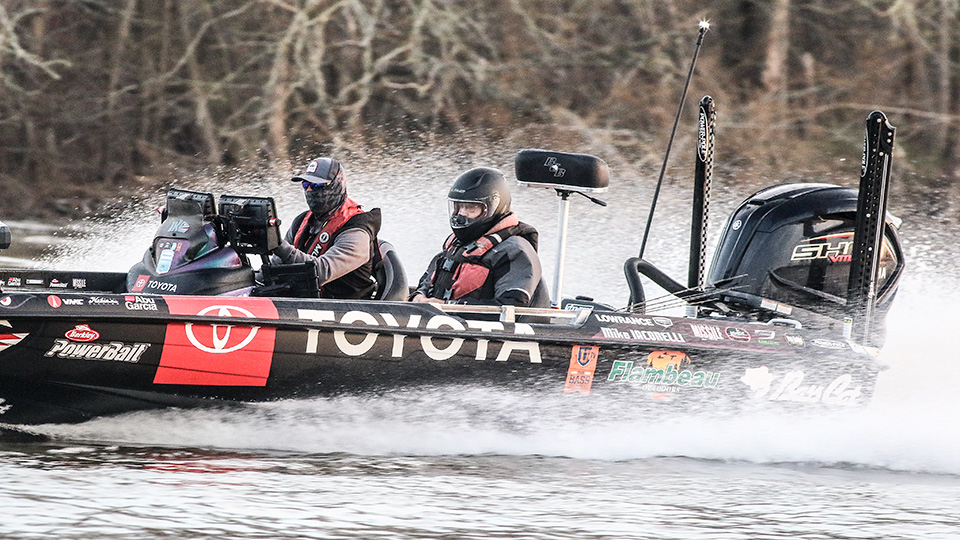
Bladed jigs and other lures have drawn attention away from the spinnerbait. But the spinnerbait is still one of the most effective and iconic bass lures ever created due to its deadly combination of flash and vibration.
At this time of year, late fall and into winter, most anglers forget about spinnerbaits altogether in favor of jigs, jerkbaits, spoons and metal blade baits. That is a big mistake. Some of the biggest cold-water bass I’ve caught in my life have come on a spinnerbait.
But you can’t just take any spinnerbait and fish it like you would when the water’s warm. In wintertime you’ll catch more bass with a spinnerbait that kicks out heavy vibrations.
That’s key because cold-water bass are lethargic. In warm water, a spinnerbait’s flash can make a bass attack from a distance. But a bass is not going move that far when the water is cold. You have to get a spinnerbait close enough to a bass that the vibration can induce a bite. The more vibration the better.
I rely on two spinnerbaits when the water’s cold. One is the Molix Muscle Ant. It comes with either tandem willow or tandem Indiana blades. I change the tail blade to a deeply cupped Colorado blade and clip off the front blade. That results in a tremendous amount of vibration.
The Molix Short Arm Spinnerbait is my other go-to in cold water. The short arm makes room for the bait’s oversized, deeply cupped willow leaf blade that really thumps.
Bass want a big meal when the water’s cold, which is why I always add a trailer to my spinnerbaits at this time. I thin out the skirt and thread Berkley’s 3.3-inch Powerbait Power Swimmer onto the hook. It gives the lure a greater presence in the water and a little more action.
In the spring and summer, you can catch bass by simply throwing a spinnerbait out and reeling it back. That won’t cut it when the water’s cold. In wintertime you have to go with the tried and true slow roll retrieve. The slow roll allows your spinnerbait to get low to the bottom and right in a bass’ face.
I cast well past the target zone. That could be a stump, a log, rocks, pilings or whatever you believe might hold a bass. After I let the spinnerbait sink to the bottom, I begin reeling very slowly. That activates the blade’s vibrations. You should see your rod tip throbbing.
About every five or 10 turns on the reel, I twitch my rod tip and let the spinnerbait sink back to the bottom. A lot of reaction bites come when I do this. I can’t overstress how important this is.
A huge advantage of slow rolling a vibrating spinnerbait during the cold months is that it produces in clear and stained to muddy water. Cold, muddy water was the kiss of death when I was young, but slow rolling a spinnerbait actually excels in under these conditions.
You don’t need specialized tackle for this technique. I use my regular spinnerbait rod, a 7-foot, medium action Abu Garcia “Ike” Power Series baitcaster. I match it with Abu’s Zenon LTX reel. It comes in 8.3:1 and 6.8:1 gear ratios. I opt for the slower 6.8:1 for cold water spinnerbaiting. I fill the reel with 15- to 17-pound Berkley 100% Fluorocarbon.
You can learn more about how I fish spinnerbaits in cold water and other techniques at www.mikeiaconelli.com or www.youtube.com/c/goingike.





